Disk Copy, Gaming, DirectStorage & Workstation
On this page we are now going to test the performance of copying files, then we’ll run a game off of it and look at load times, we’ll also see if DirectStorage works, and we’ll test out workstation performance.
DiskBench
With DiskBench, we will run five different tests. First, we place a 1GB single file onto the test drive. We copy this file from the test drive to a new folder on the test drive, volume to volume. This tests the performance of the drive’s ability to copy a single large file from itself to itself, as if you were copying files on the same drive; it replicates this drive being your primary and only drive. Then we will do the same thing with a 10GB file, a 50GB file, and a 100GB file. Finally, we do the same thing but with the SteamLibrary folder. The SteamLibrary folder is a 243GB folder containing 570 smaller files. This replicates a folder with varying file sizes and copying those files.
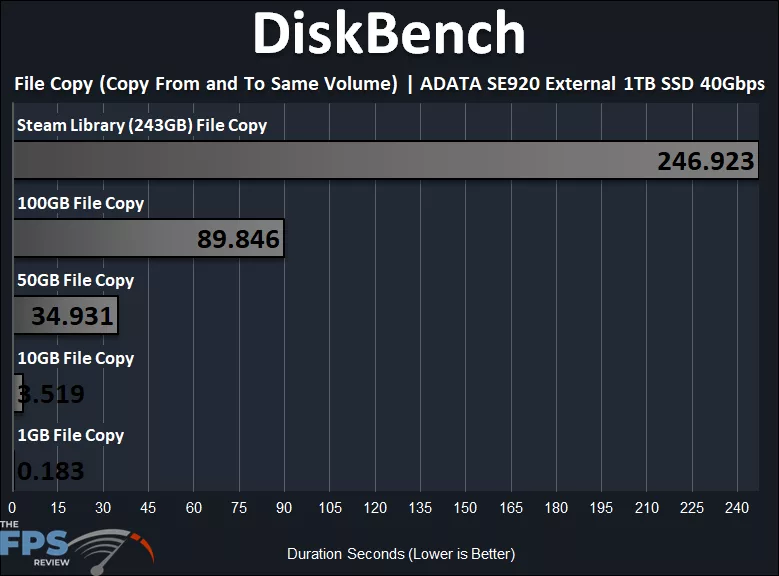
The graph above shows the performance on the ADATA SE920 copying the various file sizes, and how long it takes in seconds. The 1GB file was very fast, well under a second, while the 10GB file rose to 3.5 seconds, and the 50GB file to almost 35 seconds, and the 100GB file over a minute at almost 1.5 minutes. We can see that copy times do increase, but pretty linearly. The Steam Library folder took the longest of course, at just over 4 minutes, so if you have hundreds of GB’s of files to move over or copy, look for times in the 4-5 minute range. Overall, these times are excellent for this drive.
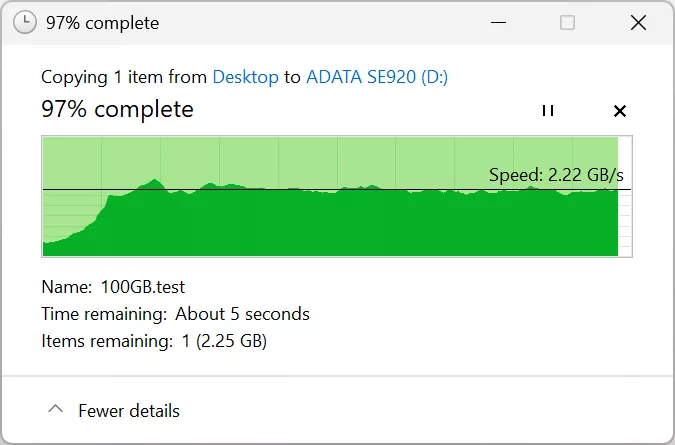
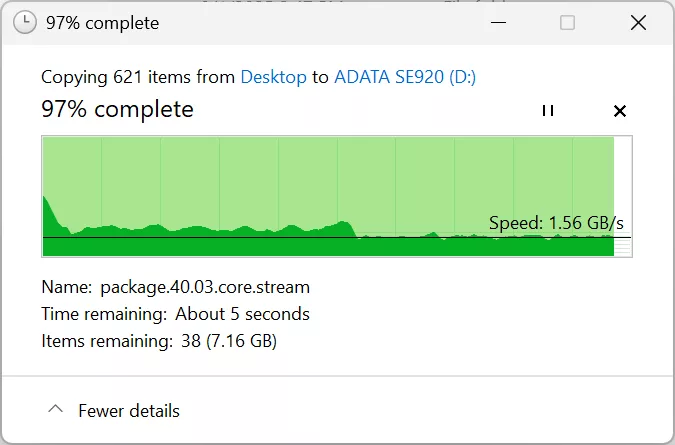
We also wanted to show what a direct file copy from our primary internal M.2 NVMe SSD (CORSAIR MP700 PRO with Air Cooler 2TB PCIe Gen5) to the ADATA SE920 looks like. In the first screenshot, we are copying a 100GB file, and it remains consistent for the duration and at about 2.22GB/s by the end, writing to the ADATA SE920. In the second screenshot, we are copying that large 243GB Steam Library folder, which contains many file sizes. It starts off just as fast, but over time, performance does fall a bit, down to 1.56GB/s by the end, but keep in mind this varies with the file sizes being copied. Over the course of filling up about half the drive’s 1TB capacity, performance does slow down.
Final Fantasy XIV: Dawntrail Benchmark
We are now including the Final Fantasy XIV: Dawntrail Benchmark as well, which benchmarks the load times of several game scenes. This new and updated benchmark utilizes a new updated engine with updated and improved graphics textures and fidelity. The benchmark calculates the sum load time of the scenes and reports the number. We run the benchmark three times and take the average of the load times. This provides consistent, objective game load testing data we can use for comparison in a game scenario outside of DirectStorage. This benchmark uses DX11.
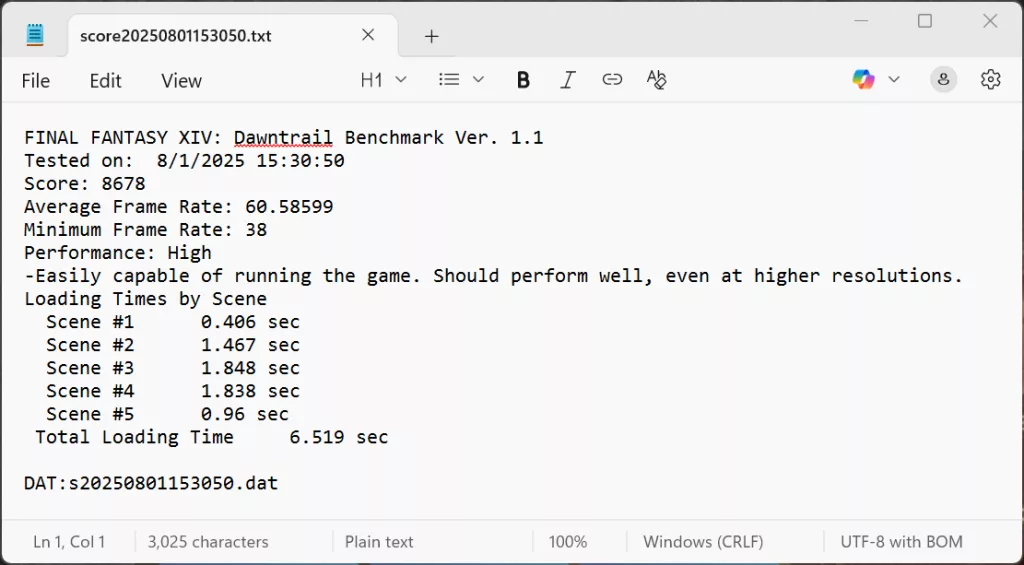
In Final Fantasy XIV: Dawntrail Benchmark, the average total loading time was 6.519 seconds, which is an excellent time. This load time is just as fast as internal M.2 NVMe SSDs we have tested, and shows that playing games right off the drive works great; you get NVMe performance for gaming off this drive over the USB4 40Gbps interface.
3DMark DirectStorage Benchmark
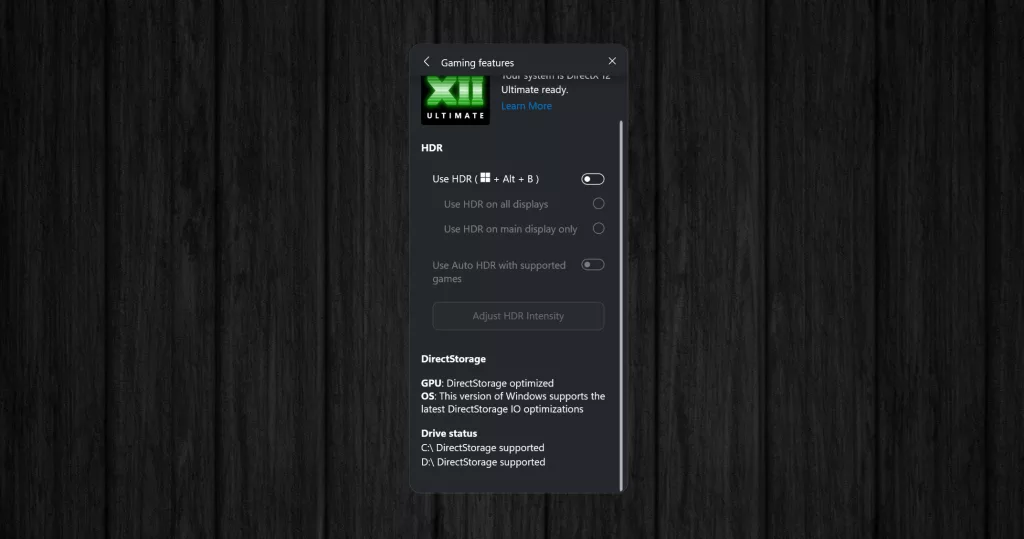
According to Windows, this drive supports DirectStorage, but does it really? We must test it. We are running the 3DMark DirectStorage feature test, showing the overall feature test score and individual test results as displayed when run on the SSD.
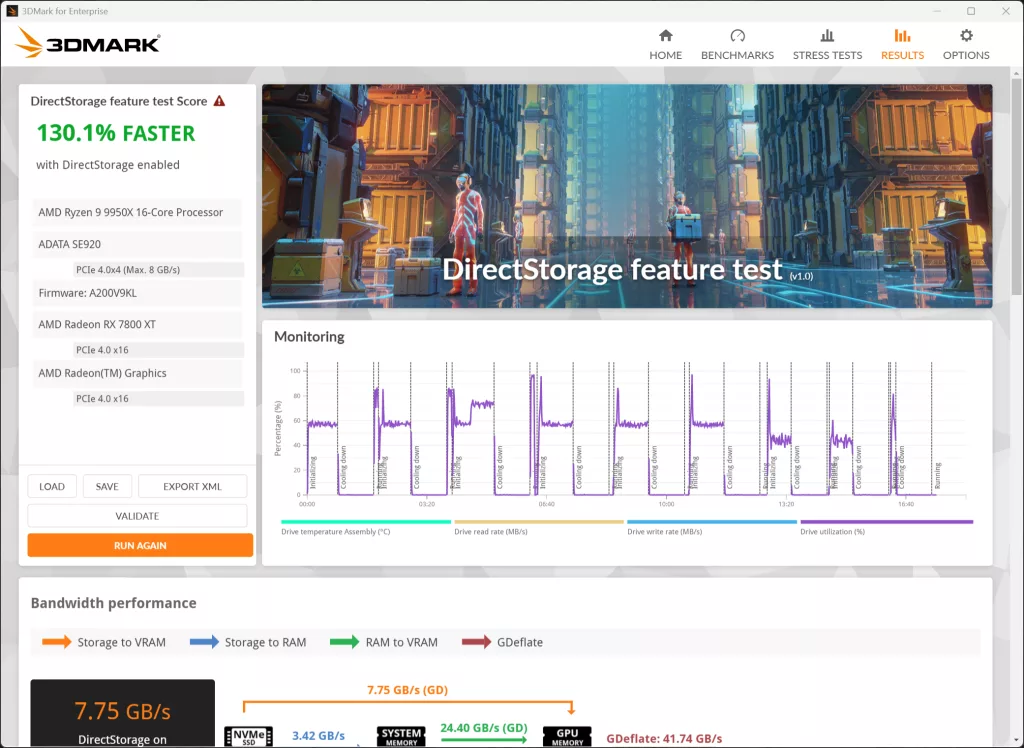
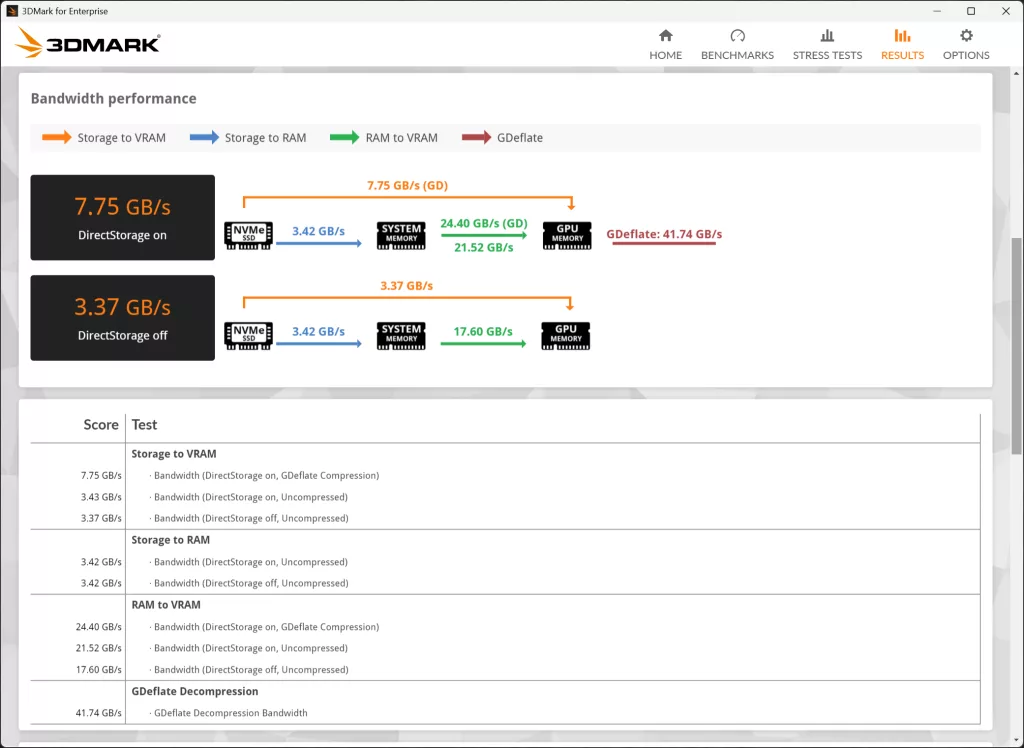
According to the 3DMark DirectStorage test, performance is 130% faster with DirectStorage enabled. You can see that the performance is only coming from the fact that DirectStorage is working mainly between System Memory to GPU Memory in our testing. The actual performance from NVMe to System Memory is not increased or changed with DirectStorage, staying at a similar 3.42GB/s of bandwidth. So, even though this external drive technically “supports” DirectStorage, you aren’t going to benefit from it on this device. This was more of an interesting academic test, but DirectStorage won’t really be a primary use case for this external portable SSD.
SPECworkstation 3.1
We are using SPECworkstation 3.1 and specifically the WPCstorage test. “The storage workload is based on storage transaction traces from a wide variety of professional applications engaged in real work.” It includes media and entertainment, product development, life sciences, energy, and general operations. Each program receives a score, and they are averaged together for an overall score, higher is better.
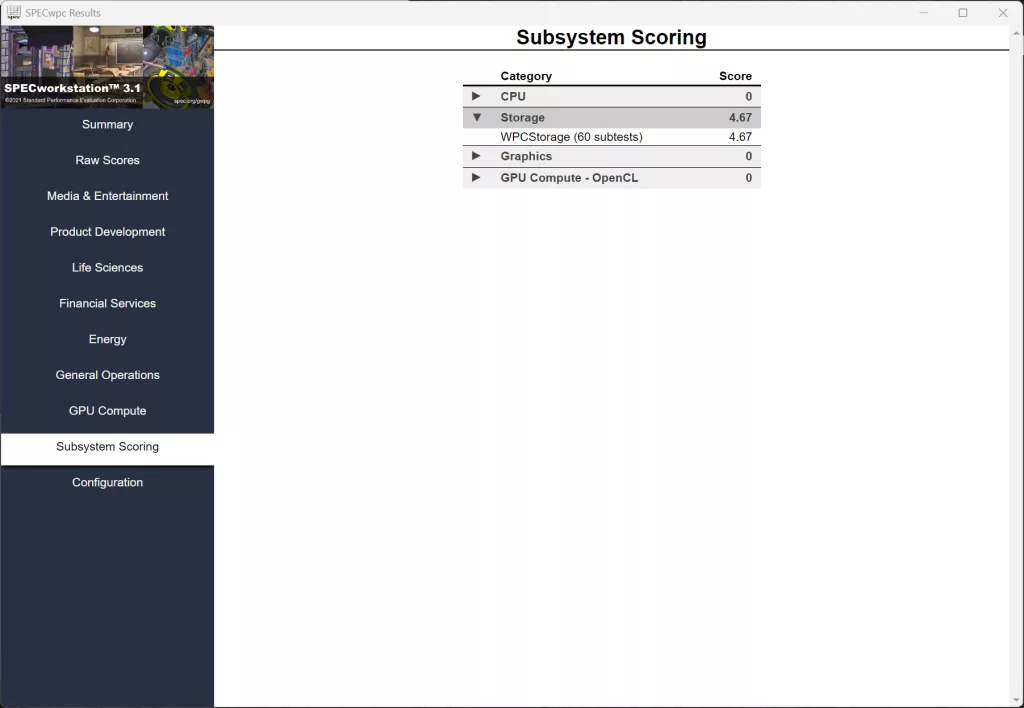
On the ADATA SE920, we got an overall SPECworkstation 3.1 score of 4.67, which isn’t too bad considering it’s an external portable SSD. In fact, if you hop over to this graph, you’ll see that this is actually higher than many internal dedicated M.2 NVMe SSDs we have tested! So good on the ADATA SE920 for running professional apps well.
